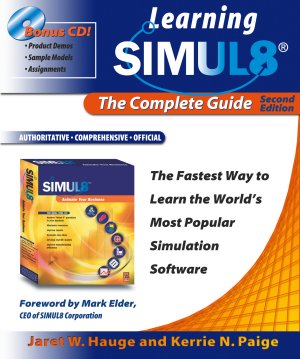What is Simulation?
There are many kinds of simulation. We've all seen examples of flight simulators. You can walk down to your local computer store and purchase any number of simulation games. All of these are called simulation because they mimic reality. A computer simulation model can be thought of as a virtual representation of a system or process. That's where the word "simulation" comes in - the goal is to mimic, or simulate, a real system so that we can explore it, perform experiments on it, and understand it before implementing it in the real world. This, of course, translates to the ability to identify bottom line opportunities for system improvement without spending a fortune in the examination process. It also allows us to examine the expected behavior of systems in the development stage before they're deployed.
NovaSim specializes in a specific kind of simulation known as discrete event simulation (DES). The first two words of that term are very important, yet often overlooked. In DES, everything is event driven, and each event is treated individually - hence the words "discrete event". Because events are individualized, it is possible to have enormous control over the way each event and associated item(s) flows through the system. This control in turn makes it possible to create very accurate models.
What then, is an event? That all depends on the system you are considering. If you are modeling a customer contact center, for example, an event could be the arrival of a call into the system, or an agent picking up a call, or a customer choosing to abandon a call. A model of a factory, on the other hand, would include events related to the movement of work in progress through the plant - arriving as raw materials, being processed by a particular machine, being placed in a batch process with other parts, and so on.
Simulation is typically used to help managers make decisions and to communicate their effects. It allows the comparison of different sets of scenarios so that the decision-maker can formulate judgments after considering all possible angles. Simulation models show the flow of work, one event at a time, graphically through a system and all its key interactions with resources and equipment. The graphics can be animated and the results output in hardcopy for analysis and examination.
Simulation is well suited to any situation involving a process flow. Because it is not dependent upon any particular analytical formula, simulation is not limited by restrictive modeling assumptions. Instead, it can be used to represent complicated dynamic interactions. Perhaps the greatest strength of simulation, however, lies in its ability to accurately reflect the randomness that we see in the real world. Examples of observed randomness include arrival patterns, service times, and travel times between stages in a network. The ability to model this variation, therefore, allows us to better understand how a system will function under a variety of scenarios.
As an example of how important randomness can be in a system, consider a simple scenario that is very familiar in winter - a line for a quad-chair ski lift. If we know that exactly 4 guests arrive every 1.5 minutes, and that the lift can accommodate exactly 4 new guests per minute, it is easy to see that no line would ever form. But that's not what happens in the real world. Instead, there is variation in the arrivals, variation in lift-breakdowns, variation in the number of skiers loading each chair and so on.
As you can see, simply replacing a random process with its mean provides very misleading results. It is not average service times or arrival rates that cause problems with waiting lines. Instead it is the randomness that creates those lines. Simulation allows you to accurately represent variation, and therefore to accurately model real-world situations.
Simulation has been successfully used, especially in manufacturing, for over 30 years. In more recent years, it has seen application across an increasingly broad range of industries as simulation technology and awareness has increased. Several examples of successful simulation applications and typical questions simulation is well suited to answer include:
- Healthcare - How can I maximize the efficiency of my patient flow, improving overall health outcomes for patients?
- Supply chain and logistics analysis - What is the effect of various shipping policies on cost, delivery lead times and inventory levels?
- Contact centers - What kind of service level, average waiting times, abandonment levels, etc. can I expect given a particular staffing plan and set of call routing scripts?
- Manufacturing - If I redesign the process, what effect will it have on cycle times, costs, and inventory levels?
- Capacity planning - Given several distinct and competing demand patterns, and operating procedures, will a given planned capacity be sufficient?

